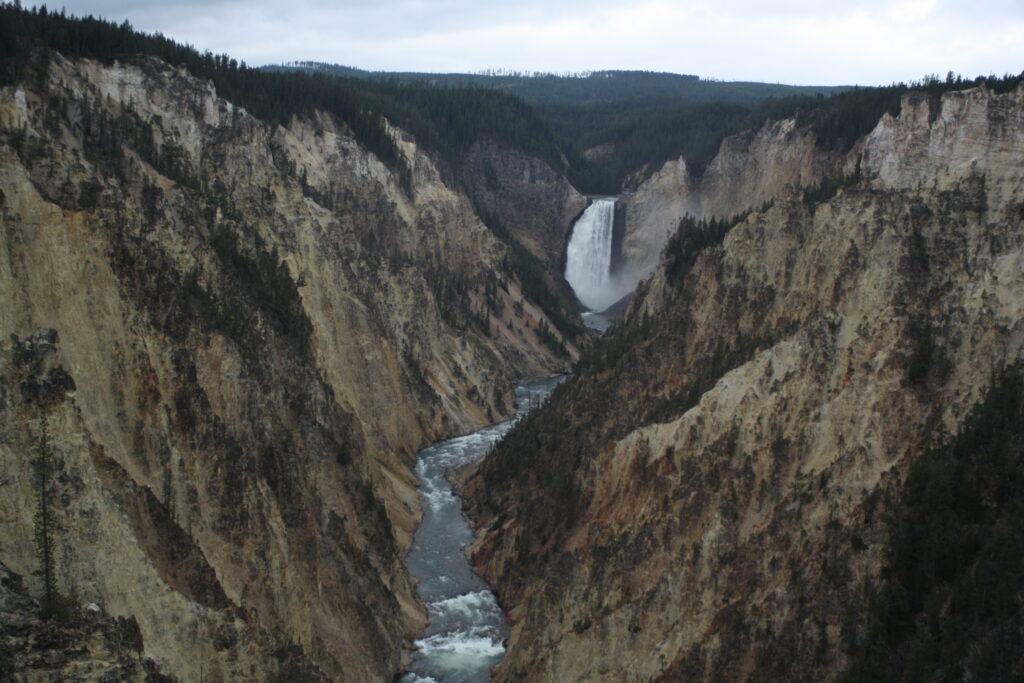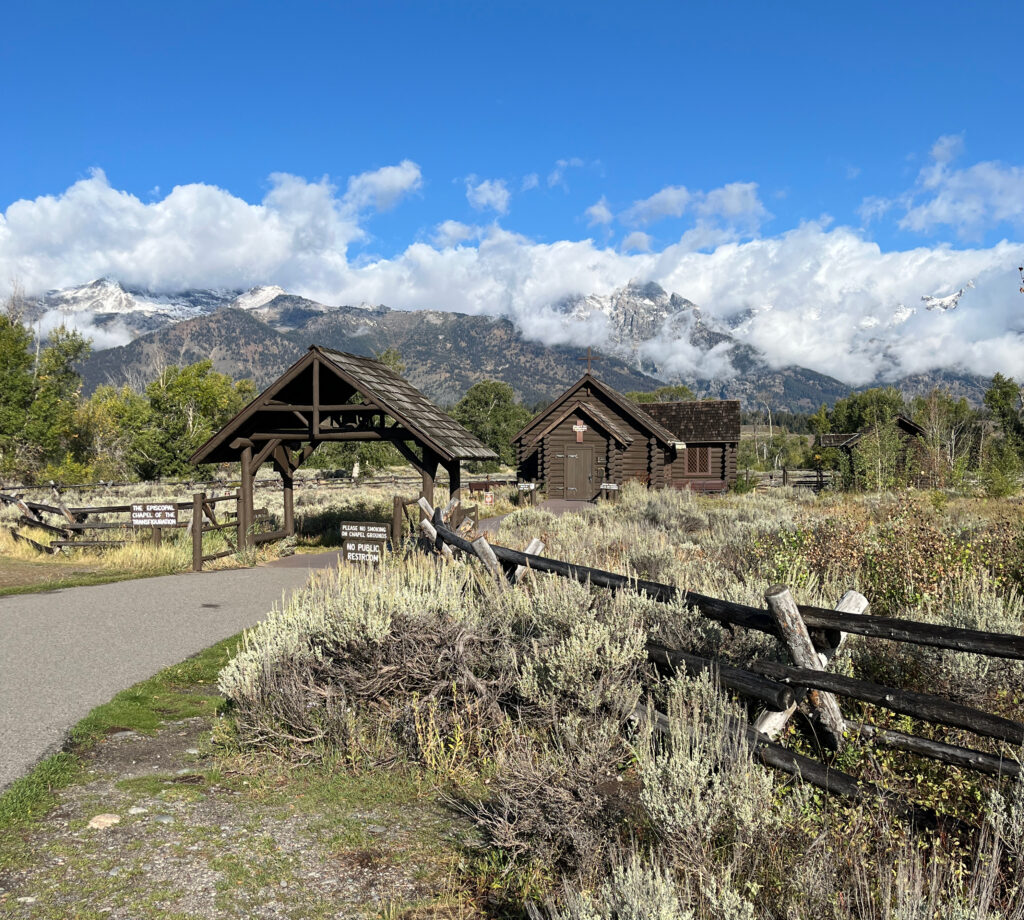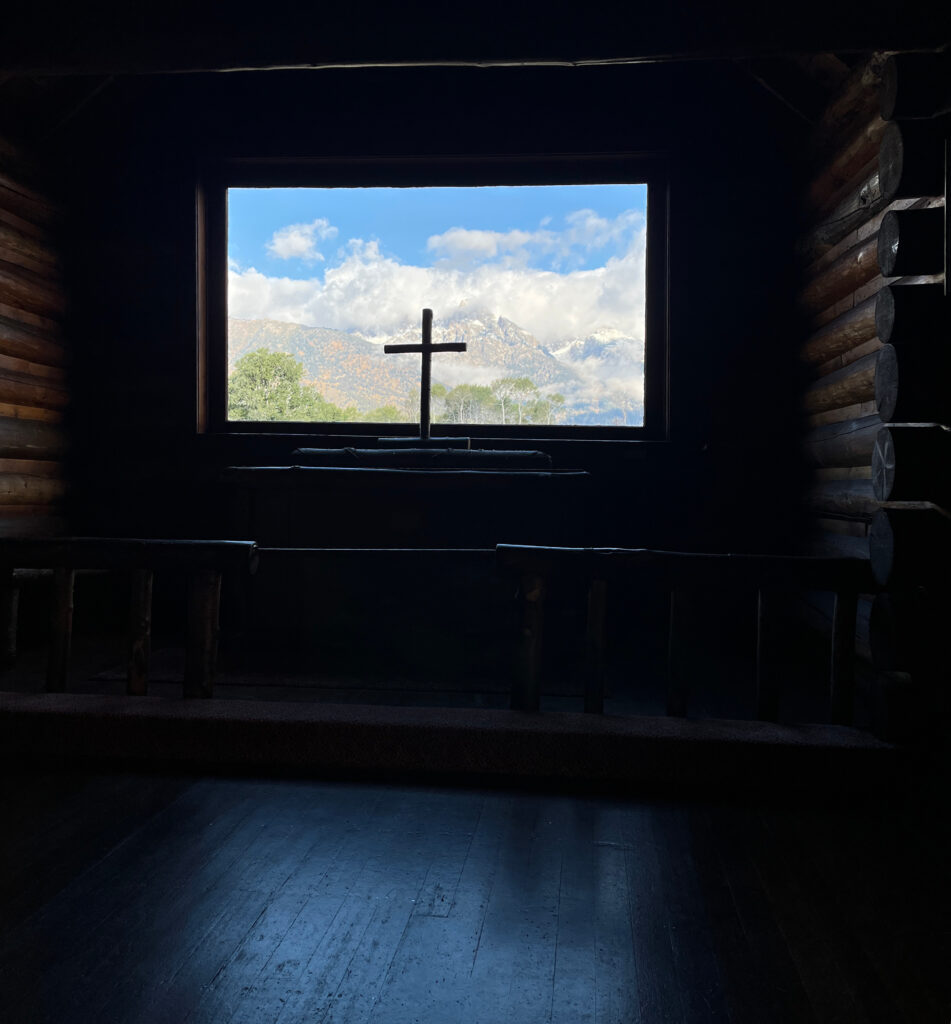You are the LORD; do not withhold your compassion from me; *
let your love and your faithfulness keep me safe for ever,For innumerable troubles have crowded upon me;
my sins have overtaken me, and I cannot see; *
they are more in number than the hairs of my head,
and my heart fails me.Be pleased, O LORD, to deliver me; *
O LORD, make haste to help me.Psalm 40

Maybe everyone else knew that Yellowstone is right next to the Grand Tetons (or right above, if you are a Mercator Projection stan). That was kind of a surprise to me. It wasn’t a big or unpleasant surprise, mind you, just a surprise. So I leisurely rose on my second morning in Yellowstone and slowly packed up for the drive south, stopping to take in the view at “Artist’s Point.” Honestly, it had been a while since I had really used my camera, and I wasn’t sure if I would be able to do the scenery justice. As it turns out, not even I am a poor enough photographer to screw up this vista.
One thing about visiting a place like Yellowstone in September is that there are enough people that you can imagine what it would be like when it is really crowded, but it’s not really crowded. Same with the road to the Tetons. There were moments when mine was the only car on the road. I recommend visiting after school starts, if you can.
The rain that had threatened Yellowstone arrived in the Grand Tetons. It was not so much a deluge as a heavy drizzle, but enough that I went looking for a warm, dry spot to read my book and maybe eat a hamburger. The other thing about being late in the season, however, is that there are fewer places open. I had to retreat to my campsite with some hot chocolate and a jambalaya mix.

Which was fine since I planned to get a relatively early start and visit the Chapel of the Transfiguration in the morning. The log chapel is more than 100 years old and comes under the auspices of an Episcopal parish in the town of Jackson, which is on down the road. Basically, if you are an Episcopalian who claims to have visited the Tetons but you don’t have a picture of the Chapel of the Transfiguration, then either you did not really visit the Tetons or you are not an actual Episcopalian. Those are the rules.
I decided that, rather than saying Morning Prayer like I normally do before really doing anything else, I would save it for the chapel. I broke camp and ambled in that direction, stopping a couple of times to take some pictures of the Tetons. Each time they were shyly hiding behind the remnants of the previous day’s weather. I wished I had some beads to throw them in the hopes that they would show themselves.

I guess it’s not uncommon for a church to be both a place of pilgrimage and a tourist attraction. The distinction comes more from the intention of the visitor than from the place itself. In fact, I may have arrived as a tourist who thought he was a pilgrim, but I grew annoyed with the chattering of the interlopers who just wanted to take a snapshot and leave. I thanked God that I was not like those people.
Later on when the crowd thinned out, I pulled out my handy-dandy Daily Office app and sat down to get serious about praying. If you’re not familiar, the service of Morning Prayer starts with a predictable intro before it gets into the psalms of the day, so I had more or less settled in when I was confounded to find Psalm 40 as the one appointed for the day. If you grew up in the 80s and were trying your best to be “alternative” in a context that had few routes to get there, you might have done what I did: listen to a lot of U2. Because of that, I was pretty familiar with their version of this particular Song of David.
So it came as something of a shock to have the words resonate as deeply as they did. I was broken open by the thought that, despite my plunge into a pit of resentment (and not a little bit of self-pity) about my situation, I was not alone. There was — there is — something inside of me that did not want to stay there. That’s not to deny whatever might be the truth of the situation, but it is to say that I desired not to be defined by this particular circumstance. And God saw that. God sees that. I began to believe that God could stoop down into the miry pit I found myself in. That the mountaintop was obscured at the moment did not mean it was inaccessible. I might have scared some tourists with my tears.